Abstract
1. The effects of various concentrations of phenoxybenzamine (dibenzyline) on the contractor response of the isolated ileum of the guinea-pig were investigated. The agonists tested were histamine, 5-hydroxytryptamine (5-HT), acetycholine and potassium chloride.
2. In addition, uptake of 14C-phenoxybenzamine into the ileum was determined as a function of antagonist concentration. The uptake increases sharply at concentrations above 10-6 g/ml, (3×10-6M) and was not saturable at any concentration tested.
3. In the presence of low concentrations of phenoxybenzamine, the dose-response curve for histamine undergoes a parallel shift of about 0·5 log units. At higher concentrations of phenoxybenzamine the maximum response is depressed. In the case of the other agonists, the maximum response is depressed as soon as any blockade becomes apparent.
4. The ease of blockade with phenoxybenzamine is 5-HT ≥ histamine>> acetylcholine ≥ potassium chloride.
5. These results do not lend support to the `spare-receptor' hypothesis and may be better explained by the `two-site' hypothesis of Moran & Triggle (1970).
6. It may further be concluded that the successful antagonism of potassium-induced contractions in this preparation lies in the ability of phenoxybenzamine to prevent the action of released acetylcholine. In the case of the contraction induced by 5-HT, phenoxybenzamine probably interferes with the 5-HT receptor responsible for neuronal release of acetycholine.
Full text
PDF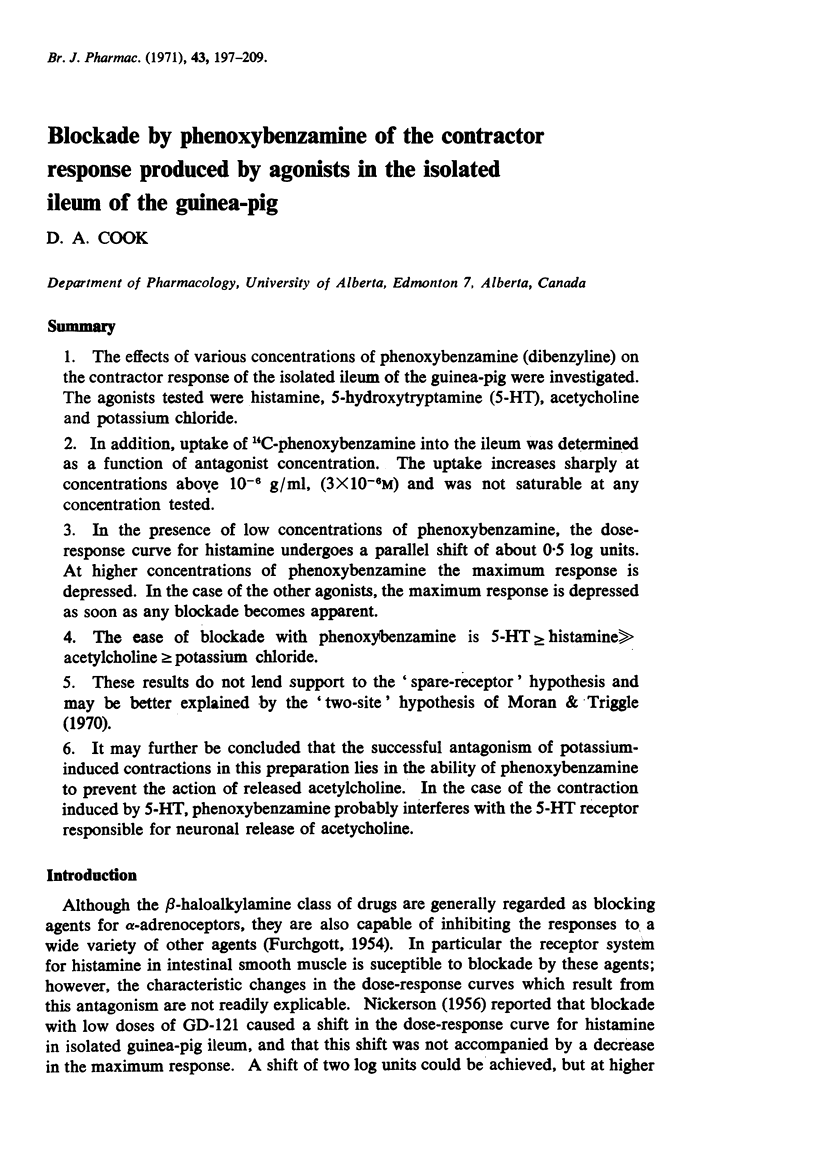

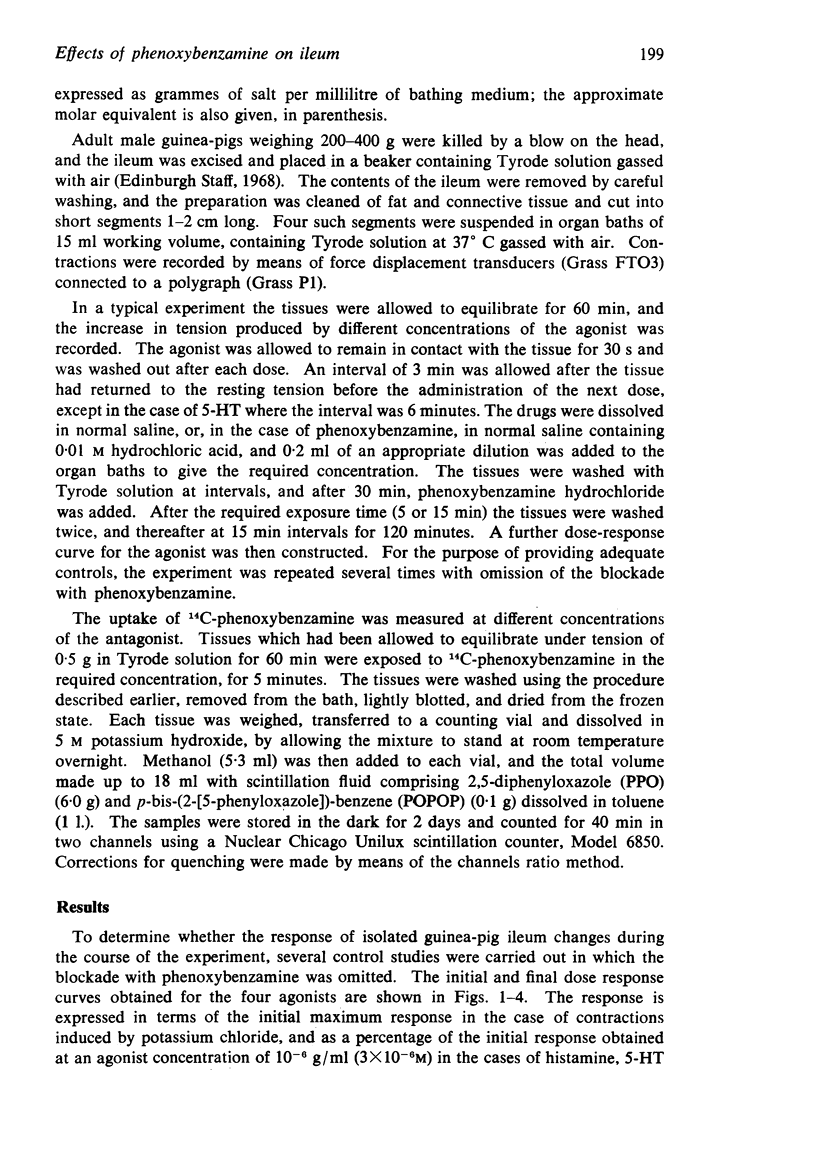
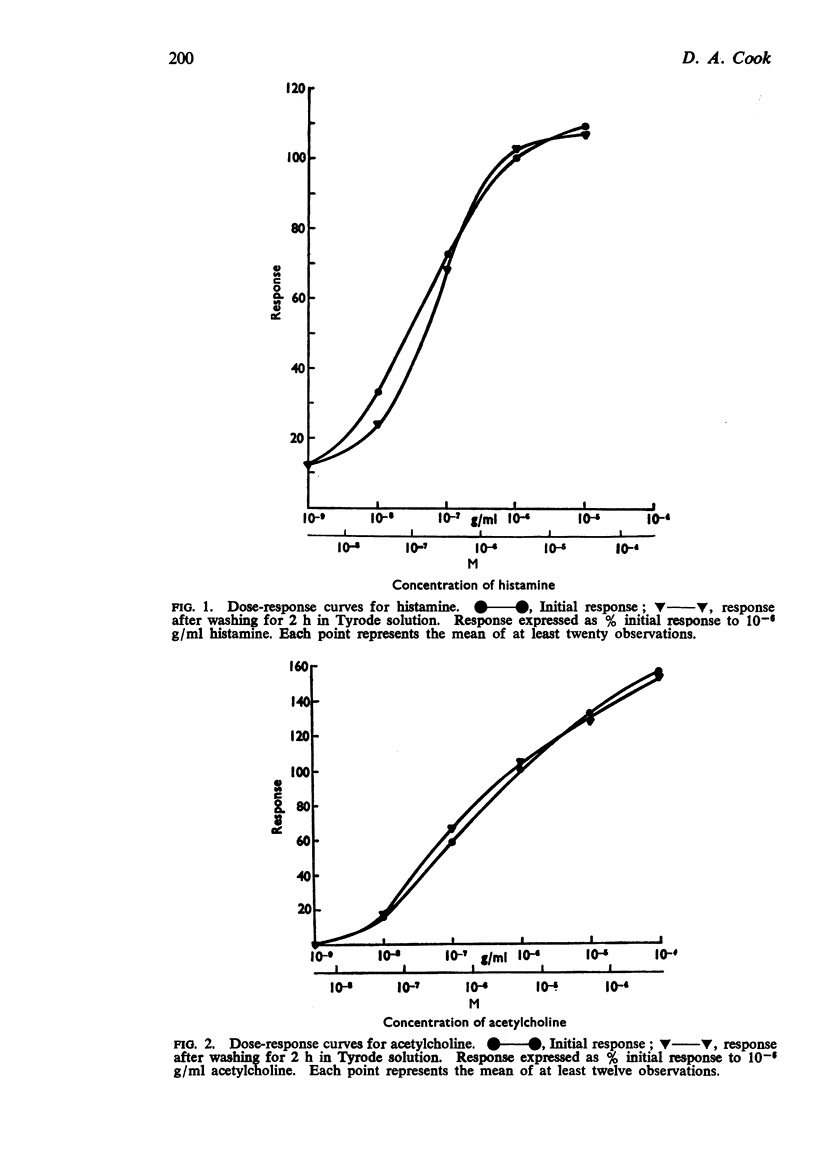
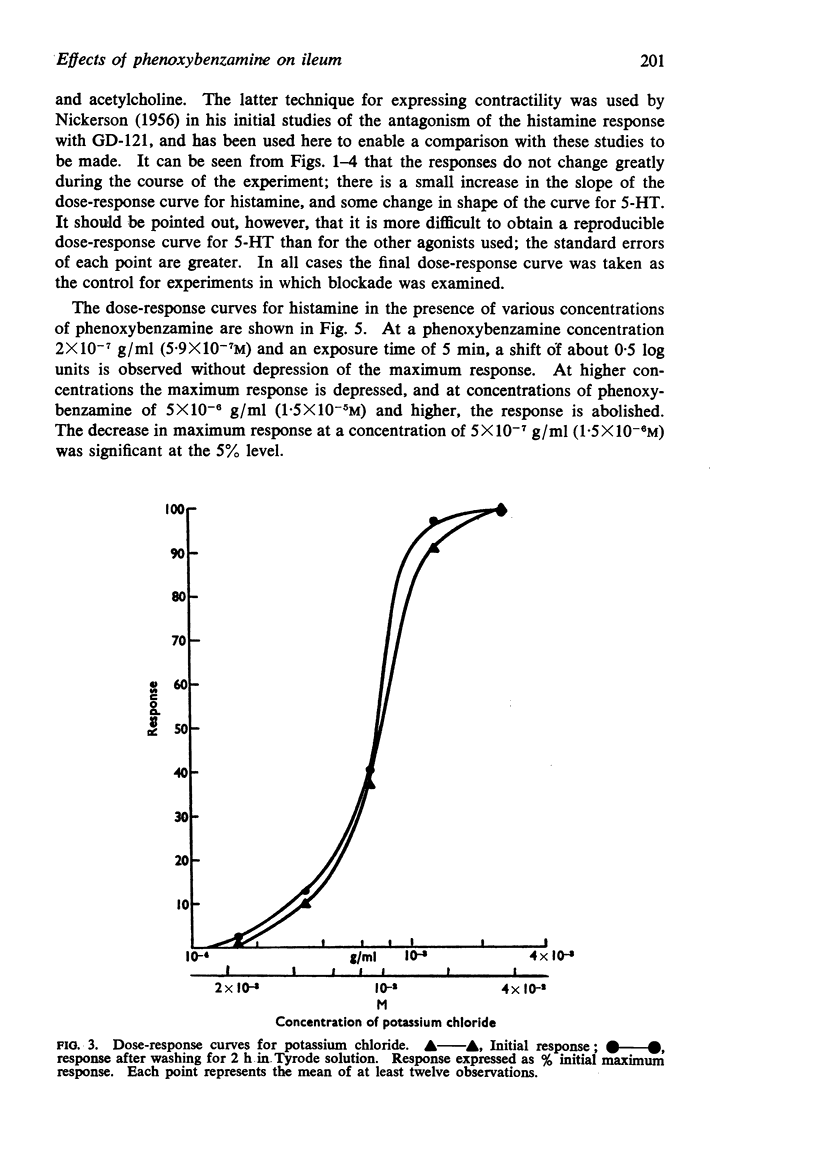

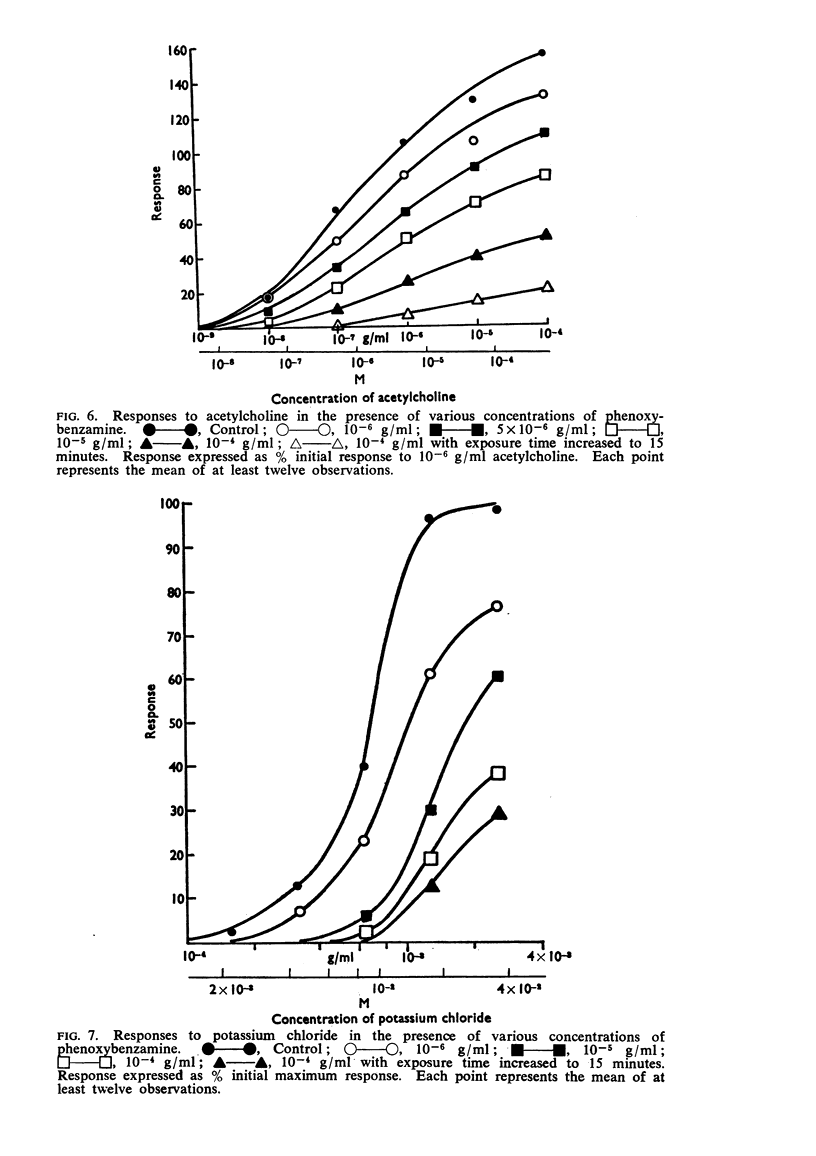
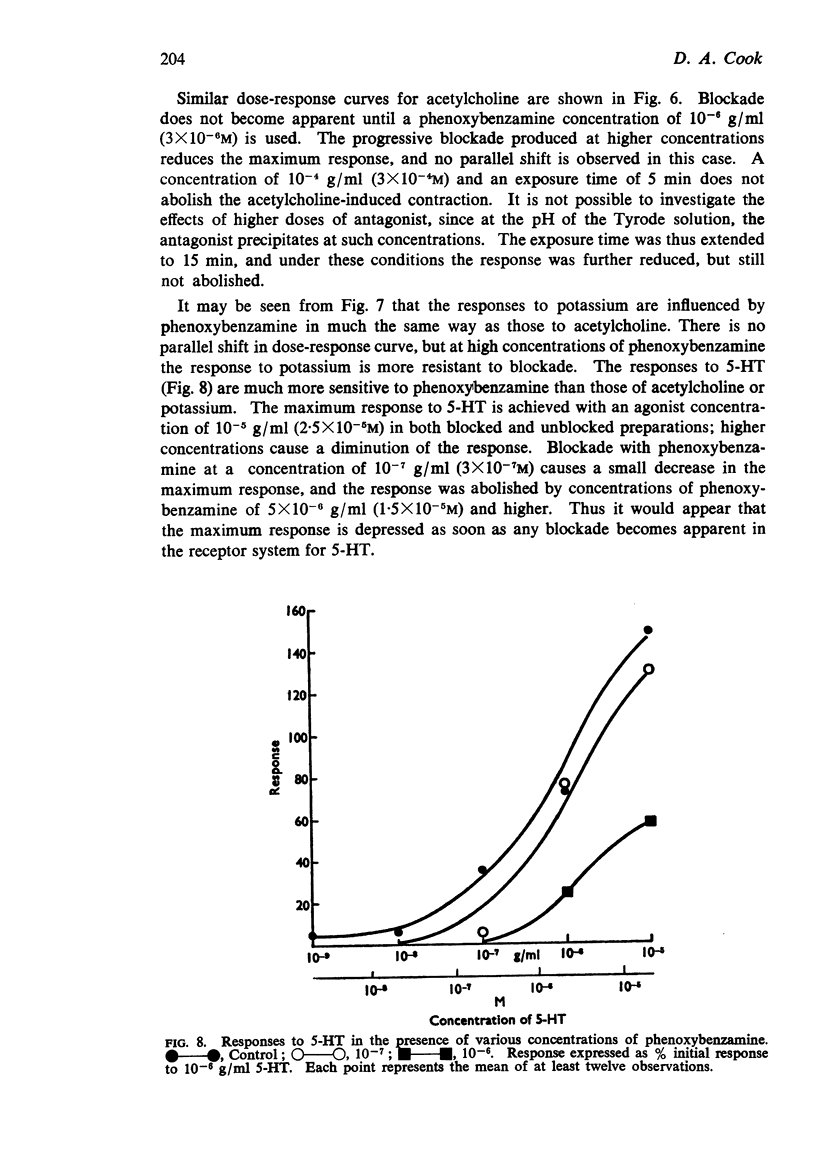

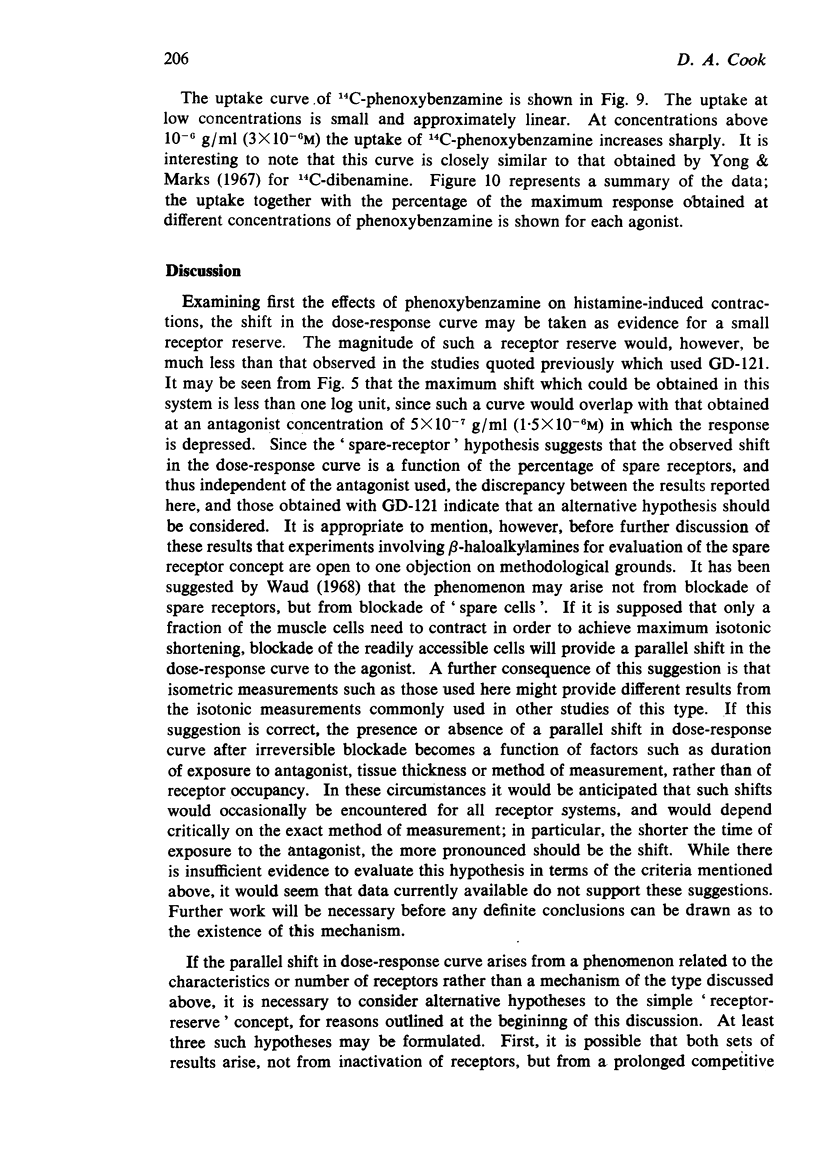

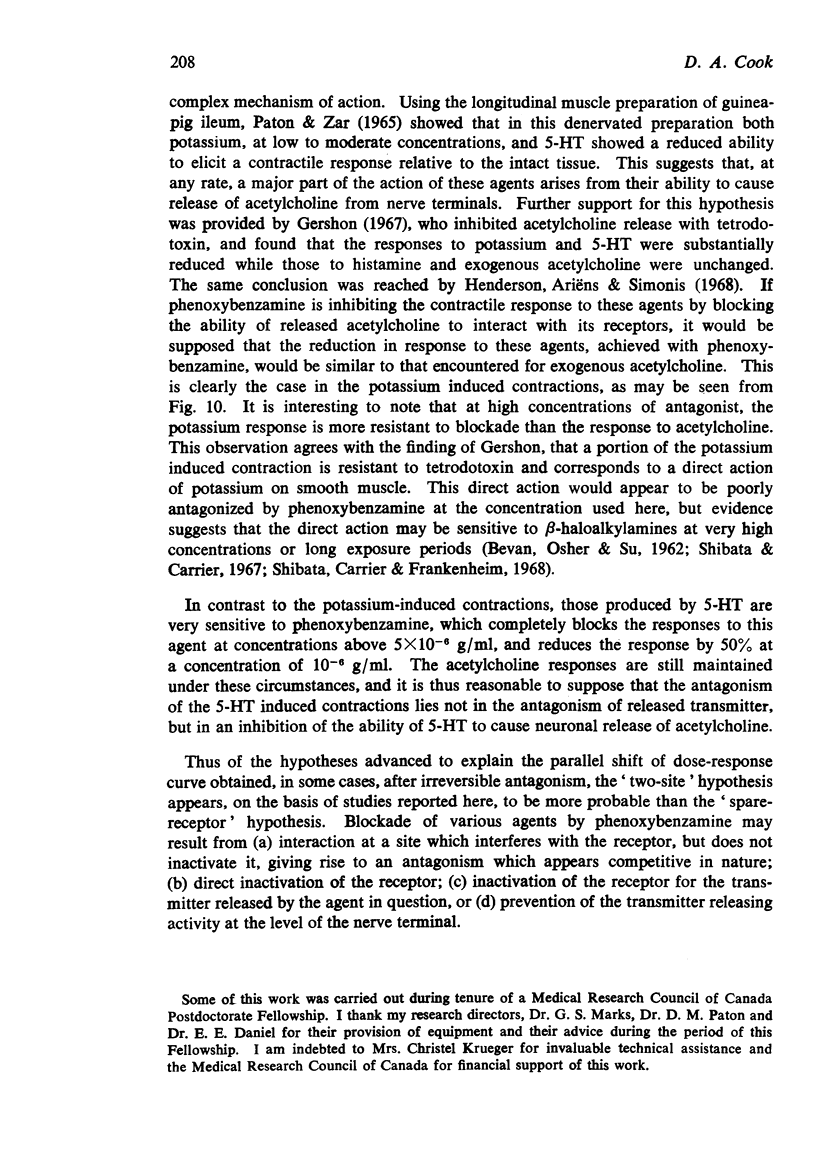

Selected References
These references are in PubMed. This may not be the complete list of references from this article.
- ARIENS E. J., van ROSSUM J., KOOPMAN P. C. Receptor reserve and threshold phenomena. I. Theory and experiments with autonomic drugs tested on isolated organs. Arch Int Pharmacodyn Ther. 1960 Sep 1;127:459–478. [PubMed] [Google Scholar]
- BEVAN J. A., OSHER J. V., SU C. Response of vascular smooth muscle to potassium and its antagonism by phenoxybenzamine. J Pharmacol Exp Ther. 1963 Feb;139:216–221. [PubMed] [Google Scholar]
- Cook D. A. The absence of a significant histamine receptor reserve in vascular smooth muscle. J Pharm Pharmacol. 1970 Jan;22(1):63–64. doi: 10.1111/j.2042-7158.1970.tb08389.x. [DOI] [PubMed] [Google Scholar]
- FURCHGOTT R. F. Dibenamine blockade in strips of rabbit aorta and its use in differentiating receptors. J Pharmacol Exp Ther. 1954 Jul;111(3):265–284. [PubMed] [Google Scholar]
- Gershon M. D. Effects of tetrodotoxin on innervated smooth muscle preparations. Br J Pharmacol Chemother. 1967 Mar;29(3):259–279. doi: 10.1111/j.1476-5381.1967.tb01958.x. [DOI] [PMC free article] [PubMed] [Google Scholar]
- Henderson P. T., Ariëns E. J., Simonis A. M. Differentiation of various types of cholinergic and other spasmogenic actions on the isolated guinea-pig ileum. Eur J Pharmacol. 1968 Aug;4(1):62–70. doi: 10.1016/0014-2999(68)90010-1. [DOI] [PubMed] [Google Scholar]
- Lewis J. E., Miller J. W. The synthesis of tritium-labeled phenoxybenzamine hydrochloride. J Med Chem. 1966 Mar;9(2):261–262. doi: 10.1021/jm00320a035. [DOI] [PubMed] [Google Scholar]
- May M., Moran J. F., Kimelberg H., Triggle D. J. Studies on the noradrenaline alpha-receptor. II. Analysis of the "spare-receptor" hypothesis and estimation of the concentration of alpha-receptors in rabbit aorta. Mol Pharmacol. 1967 Jan;3(1):28–36. [PubMed] [Google Scholar]
- Moran J. F., Triggle C. R., Triggle D. J. The mechanism of action of 2-halogenoethylamines at the adrenergic alpha-receptor and a further investigation of the "spare receptor" hypothesis. J Pharm Pharmacol. 1969 Jan;21(1):38–46. doi: 10.1111/j.2042-7158.1969.tb08128.x. [DOI] [PubMed] [Google Scholar]
- NICKERSON M. Receptor occupancy and tissue response. Nature. 1956 Sep 29;178(4535):697–698. doi: 10.1038/178697b0. [DOI] [PubMed] [Google Scholar]
- Shibata S., Carrier O., Jr Antagonizing action of chlorpromazine, dibenamine, and phenoxybenzamine on potassium-induced contraction. Can J Physiol Pharmacol. 1967 Jul;45(4):587–596. doi: 10.1139/y67-071. [DOI] [PubMed] [Google Scholar]
- Shibata S., Carrier O., Jr, Frankenheim J. Effect of chlorpromazine, dibenamine and phenoxybenzamine on the contractile response of taenia coli to potassium, acetylcholine, angiotensin and barium. J Pharmacol Exp Ther. 1968 Mar;160(1):106–111. [PubMed] [Google Scholar]
- Terner U. K., Cook D. A., Marks G. S. Studies of the chemical nature of the -adrenergic receptor. V. Validity of the receptor protection approach. Biochem Pharmacol. 1971 Mar;20(3):597–603. doi: 10.1016/0006-2952(71)90146-8. [DOI] [PubMed] [Google Scholar]
- Waud D. R. Pharmacological receptors. Pharmacol Rev. 1968 Jun;20(2):49–88. [PubMed] [Google Scholar]
- Yong M. S., Marks G. S. Studies of the chemical nature of the alpha-adrenergic receptor. II. Investigation of the labeling procedure. Biochem Pharmacol. 1967 Jun;16(6):1120–1126. doi: 10.1016/0006-2952(67)90287-0. [DOI] [PubMed] [Google Scholar]


